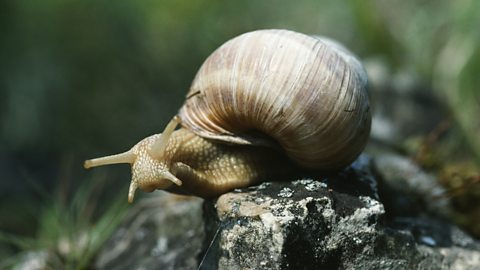Biotic factors affecting the abundance and distribution of organisms
The abundance and distribution of organisms are affected by bioticLiving elements of an ecosystem, such as plants and animals. factors, which are factors that are living. The main biotic factors are predationHunting and killing prey animals. and competitionThe interaction between organisms after the same limited resources.. Biotic factors include:
Availability of food
All animals require food to live. The availability of food is a major factor in how many animals live in an ecosystemThe living organisms in a particular area, together with the non-living components of the environment.. Areas like rainforests with rich food supplies have more speciesA type of organism that is the basic unit of classification. Individuals of different species are not able to interbreed successfully. of life than other areas like deserts and the Polar Regions where there is less food.
New predators
The arrival of new predatorAn animal that hunts, kills and eats other animals for food. in an ecosystem can have a devastating effect. In balanced ecosystems, predators and preyOrganisms that predators kill for food. have evolved together. Predators can catch enough prey to survive, but not so many that they kill all of their food.
The arrival of a new predator can upset this balance. An example of this is the introduction of the red fox to Australia, which has caused concern over their effect on native birds and small mammals. Introducing new predators can cause a rapid decline in the numbers of prey, which then reduces the food supply for existing predators.
New pathogens
When organisms inhabit new ecosystems they often bring new pathogenMicroorganism that causes disease.. As an example, Europeans first colonised North America, and introduced new pathogens, like the influenza virus. Many Native Americans had not developed immunity to new diseases such as this, and so many were killed by them. There are many examples of new pathogens being introduced to the UK. Ash dieback is a disease caused by a fungus which has killed many ash trees since it was first found in the UK in 2012.

Image caption, Grapevine snail
Image caption, Nematode worm
Image caption, Rose aphid
1 of 3
These new pests might devastate farmer's produce.
Pathogens have also been introduced on purpose. Myxomatosis is a disease that affects rabbits. It is caused by a virus and infected rabbits develop skin tumours and may go blind. In the 1950s it was purposefully released into the wild in the UK to reduce the populationAll of the members of a single species that live within a geographical area. of rabbits. It did exactly this and some people estimate that more than 99 per cent of rabbits in the UK died. However, our rabbits developed immunity to it and the population has now returned to previous levels.
Competition
The introduction of a new species into an ecosystem can result in it out-competing another native species. Several hundred years ago grey squirrels were brought over from North America by wealthy people and let free in their grounds. Our smaller native red squirrel couldn't compete with the newer, larger grey squirrel. Because grey squirrels are larger they can store more fat and survive harsher winters. So the numbers of red squirrels and the places they live has reduced dramatically.
Other examples of out-competition of native species by newly introduced species include the Canada goose in Europe and the cane toad in Australia, Himalayan balsam in Cambodia and harlequin ladybirds are also current concerns.